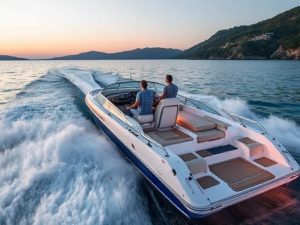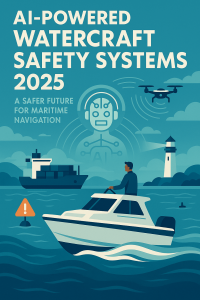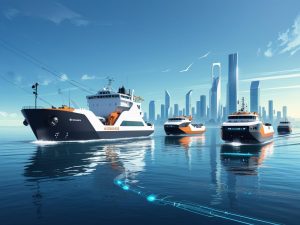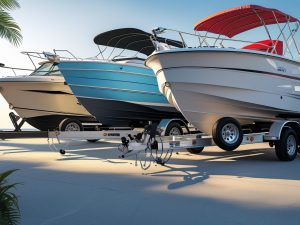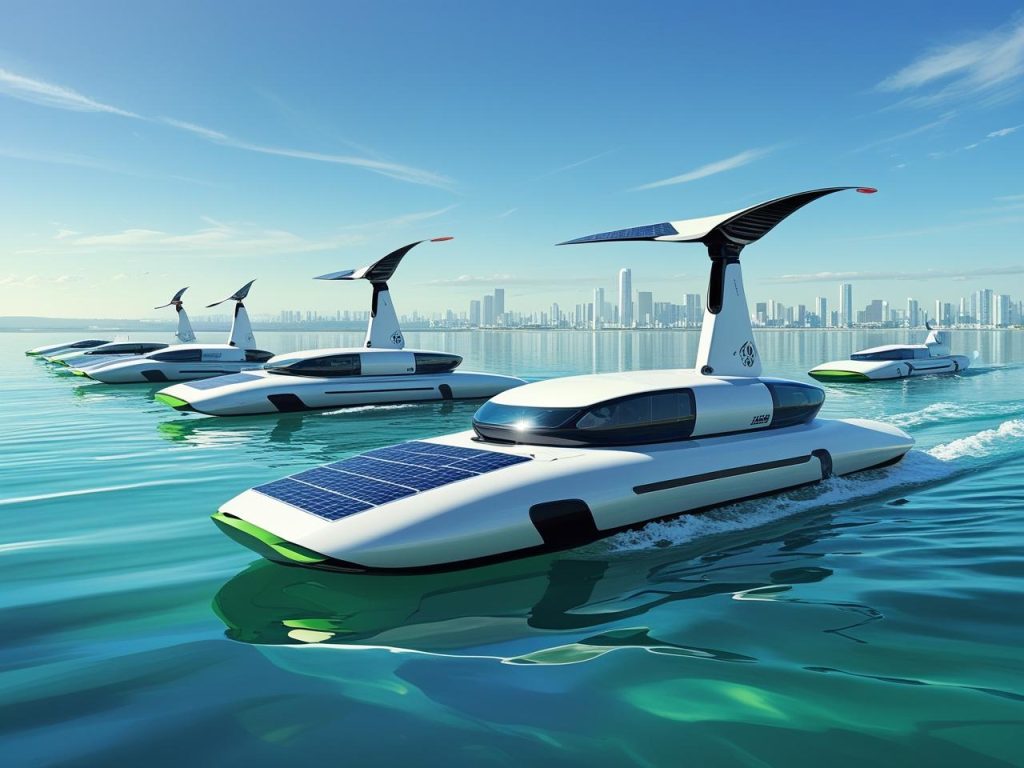
The maritime industry is undergoing a transformative wave of sustainability in 2025. With growing concerns about carbon emissions, marine pollution, and the impact of traditional fuel-powered vessels on aquatic ecosystems, innovators are stepping up to offer sustainable watercraft alternatives that are cleaner, smarter, and eco-friendly.
This article explores the most promising sustainable watercraft technologies of 2025, from electric boats and hydrogen-powered ferries to solar yachts and hybrid marine vehicles. We also highlight regulatory support, commercial adoption trends, and the top manufacturers driving the green revolution in water mobility.
1. Introduction
In 2025, the maritime industry is no longer an outlier in the global sustainability conversation. As countries push for net-zero emissions and enforce stricter marine pollution laws, both commercial operators and private boat owners are turning toward sustainable watercraft alternatives.
From leisure yachts to commercial ferries and cargo vessels, manufacturers are leveraging electric propulsion systems, clean hydrogen fuels, and renewable energy technologies to reduce carbon footprints while maintaining high-performance standards.
2. Why Sustainable Watercraft Matter in 2025
The traditional maritime sector accounts for nearly 3% of global greenhouse gas emissions, according to the IMO (International Maritime Organization). These emissions contribute to climate change and significantly pollute oceans, threatening marine biodiversity and coastal communities.
Key sustainability concerns in the marine sector:
-
Heavy reliance on diesel and bunker fuels.
-
Emission of sulfur oxides (SOx), nitrogen oxides (NOx), and CO₂.
-
Noise pollution affecting marine wildlife.
-
Fuel spills contaminating water bodies.
As environmental awareness grows among consumers, businesses, and governments alike, eco-friendly watercraft are becoming the new standard for marine transportation.
3. Leading Types of Sustainable Watercraft
Electric Boats
Electric propulsion systems are among the most popular green alternatives today. They use lithium-ion batteries to power onboard motors, producing zero emissions during operation.
Examples of Electric Watercraft:
-
Electric passenger ferries.
-
Recreational electric boats.
-
Electric fishing boats.
Top Models in 2025:
-
Candela C-8 (Swedish electric hydrofoil)
-
X Shore Eelex 8000 (Scandinavian electric yacht)
-
Voltari 260 (North American performance electric boat)
Advantages:
-
No fuel smell or noise.
-
Low maintenance.
-
Silent and smooth operation.
Solar-Powered Watercraft
Solar boats are equipped with photovoltaic (PV) panels that convert sunlight into electrical energy to power the motor and onboard electronics.
Best Use-Cases:
-
Lake cruising.
-
Short-distance passenger transport.
-
Leisure boating.
Popular 2025 Innovations:
-
Silent-Yachts 62 Tri-Deck (Solar-powered luxury yacht)
-
SolarCat 44 (Catamaran with solar array for propulsion)
Advantages:
-
Renewable energy source.
-
Reduced operating costs.
-
Excellent for regions with high solar irradiance.
Hydrogen Fuel Cell Boats
Hydrogen fuel cells generate electricity via a chemical reaction between hydrogen and oxygen, emitting only water vapor as a by-product.
2025 Flagship Projects:
-
Sea Change Ferry – USA’s first commercial hydrogen ferry.
-
HySeas III – Scotland’s hydrogen-powered ferry for public transport.
Advantages:
-
Quick refueling.
-
Zero CO₂ emissions.
-
Ideal for commercial routes with consistent usage.
Wind-Assisted and Sail Boats
While sailing is an ancient form of propulsion, it’s making a modern comeback with smart sails and wind-assist technology that reduces dependency on fossil fuels for large cargo ships.
2025 Technologies:
-
Suction sails.
-
Automated rigid sails.
-
Rotor sails (e.g., Norsepower technology on Maersk tankers)
Advantages:
-
Free and unlimited wind resource.
-
Reduced emissions on hybrid vessels.
-
Less engine strain, leading to longer life.
Hybrid Marine Vessels
Hybrid boats combine traditional fuel engines with electric motors or alternative energy sources like hydrogen or solar.
Common Applications:
-
Ferries.
-
Coast guard vessels.
-
Survey boats.
Example Models in 2025:
-
Bénéteau Hybrid Yachts.
-
Greenline Hybrid Cruisers.
Advantages:
-
Extended range.
-
Reduced fuel costs.
-
Lower emissions.
Autonomous Eco-Watercraft
Automation meets sustainability in 2025 with the rise of self-navigating eco-vessels used for cargo delivery, ocean monitoring, and waste collection.
Examples:
-
The Ocean Cleanup Interceptor (solar-powered trash collector).
-
Sea Machines’ AI-controlled green boats.
Advantages:
-
Efficient operation.
-
Lower labor costs.
-
Real-time data collection.
4. Top Manufacturers of Sustainable Watercraft in 2025
Here are the global leaders pioneering the sustainable marine sector:
| Manufacturer | Country | Specialization |
|---|---|---|
| Candela | Sweden | Electric hydrofoils |
| X Shore | Sweden | Electric recreational boats |
| Silent Yachts | Austria | Solar-powered luxury yachts |
| Toyota Marine | Japan | Hydrogen-powered leisure boats |
| ABB Marine & Ports | Switzerland | Hybrid propulsion systems |
| Greenline Yachts | Slovenia | Hybrid and solar yachts |
| Navalt Solar | India | Solar electric ferries |
| SeaBubbles | France | Electric water taxis |
5. Benefits of Switching to Sustainable Watercraft
✅ Environmental Protection
Reduced emissions, less water pollution, and preservation of marine ecosystems.
✅ Lower Operating Costs
Electric and solar boats cut down on fuel costs and require less maintenance.
✅ Silent Operation
Ideal for nature excursions, tourism, and wildlife tours.
✅ Increased Government Incentives
Subsidies and grants available in 2025 for green boat manufacturing and adoption.
✅ Improved Consumer Demand
Eco-conscious consumers prefer sustainable boating options.
6. Challenges Facing the Transition
Despite advancements, some challenges hinder mass adoption:
-
High Initial Cost: Electric and hydrogen boats remain more expensive upfront.
-
Limited Infrastructure: Lack of charging stations and hydrogen fuel docks.
-
Battery Limitations: Range and charging times can still be limiting.
-
Regulatory Complexity: Differing environmental standards across regions.
7. Global Regulations Promoting Marine Sustainability
Governments and international bodies are setting mandates to phase out fossil fuels from marine applications:
| Region | Regulation | Target Year |
|---|---|---|
| European Union | Zero-emission zones in ports | 2030 |
| California, USA | Ban on gas-powered boats in lakes | 2035 |
| IMO | 50% GHG reduction (baseline 2008) | 2050 |
| Norway | Electric-only fjord tourism zones | 2026 |
Such regulations are encouraging boat owners and fleet operators to transition to cleaner alternatives before deadlines.
8. Market Trends and Growth Outlook
According to Allied Market Research, the global electric boat market is projected to reach $15.1 billion by 2030, growing at a CAGR of 12.9%.
Key Market Trends:
-
Integration of AI and IoT for smart boat management.
-
Luxury segment expansion with solar-powered yachts.
-
Government funding for commercial green fleets.
-
Growth of recreational boating among eco-conscious consumers.
9. Future Innovations to Watch
1. Solid-State Batteries
Promising longer range and faster charging for electric boats.
2. Hydrofoils
Reduce drag and increase speed with less energy usage.
3. Green Hydrogen Production
On-site solar-to-hydrogen generators for boat refueling.
4. Smart Solar Sails
Adaptive sails with integrated photovoltaic surfaces.
5. Floating Charging Stations
Autonomous charging docks powered by renewables.
10. Frequently Asked Questions (FAQs)
Q1: Are electric boats safe in saltwater environments?
A: Yes, most modern electric boats are designed with waterproof enclosures and corrosion-resistant materials, making them safe for both saltwater and freshwater usage.
Q2: How far can a fully electric boat travel on a single charge?
A: Ranges vary based on battery size and boat type, but most recreational electric boats in 2025 can travel 50–100 nautical miles on a full charge.
Q3: What’s the cost difference between electric and diesel boats?
A: While electric boats may cost 20–30% more upfront, they often pay off in lower maintenance and fuel savings within 3–5 years of operation.
Q4: Are there any grants or incentives for sustainable boat purchases?
A: Yes, many countries in 2025 offer government subsidies, tax credits, and zero-interest loans for sustainable boat purchases or conversions.
Q5: Can older boats be retrofitted with electric propulsion systems?
A: Absolutely. Many manufacturers offer conversion kits for existing boats, allowing owners to switch from internal combustion engines to electric drives.
Q6: Are solar boats practical in cloudy climates?
A: Modern solar boats are equipped with efficient battery systems that store energy for low-light conditions. However, performance may vary depending on sunlight availability.
Q7: What is the maintenance like for electric or solar boats?
A: Maintenance is generally much lower than for fuel-powered boats. There are fewer moving parts, no oil changes, and minimal mechanical wear.
Conclusion
The shift toward sustainable watercraft alternatives in 2025 is not just a trend — it’s a necessary evolution for the maritime industry. With global pressure to curb emissions and protect oceans, electric, hydrogen, solar, and hybrid boats are redefining the future of water transportation.
For boat owners, manufacturers, and policymakers, embracing these innovations is not only an investment in the environment but also in long-term economic and operational efficiency.

